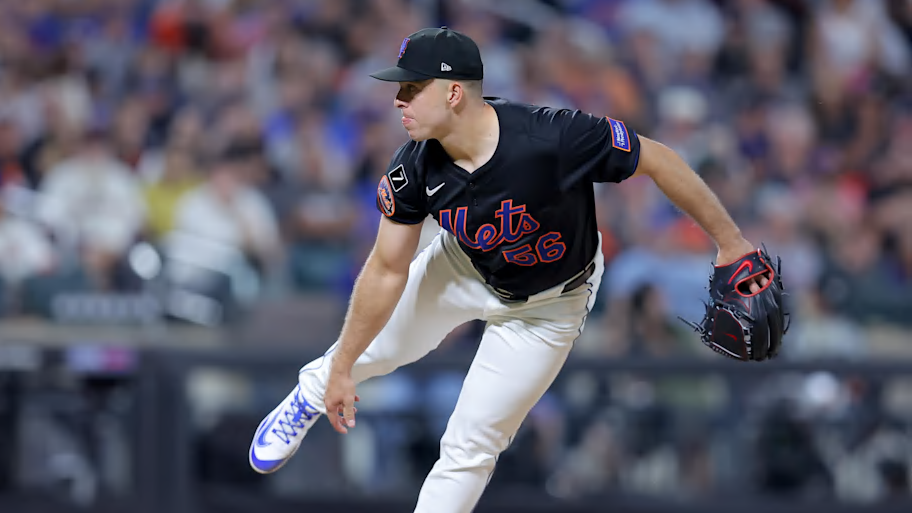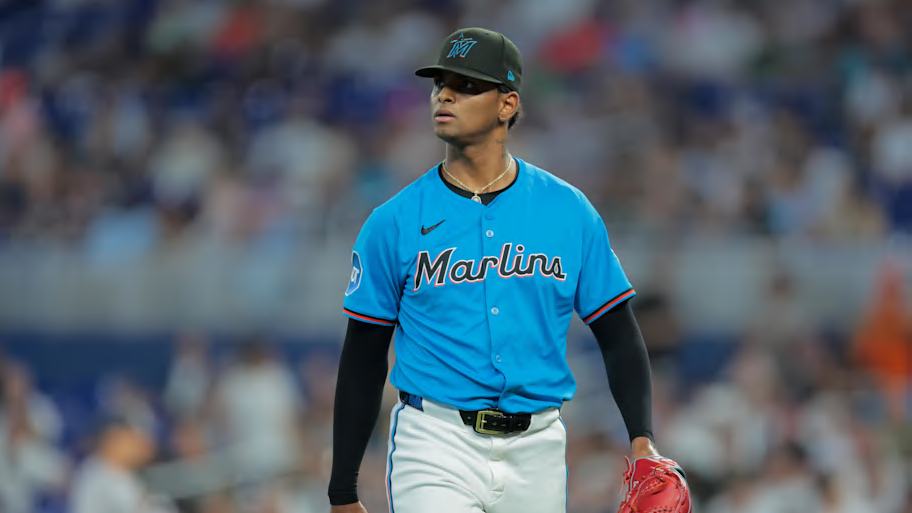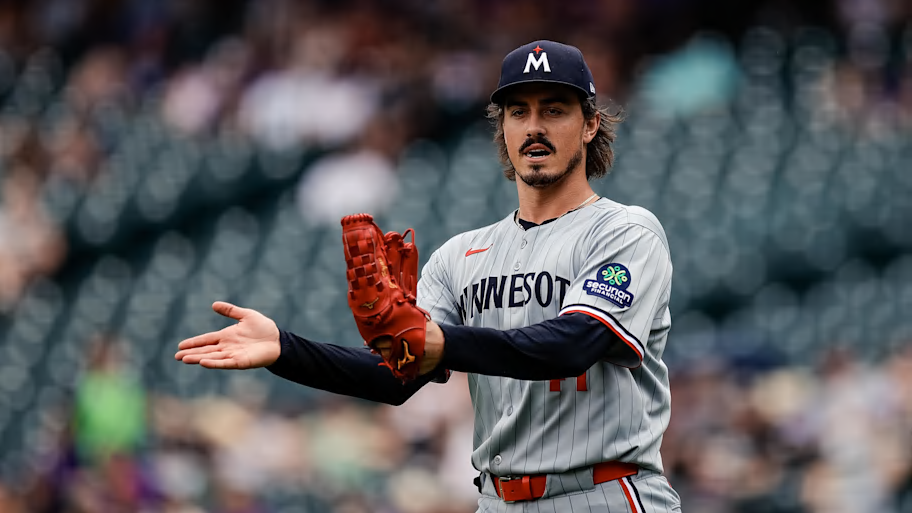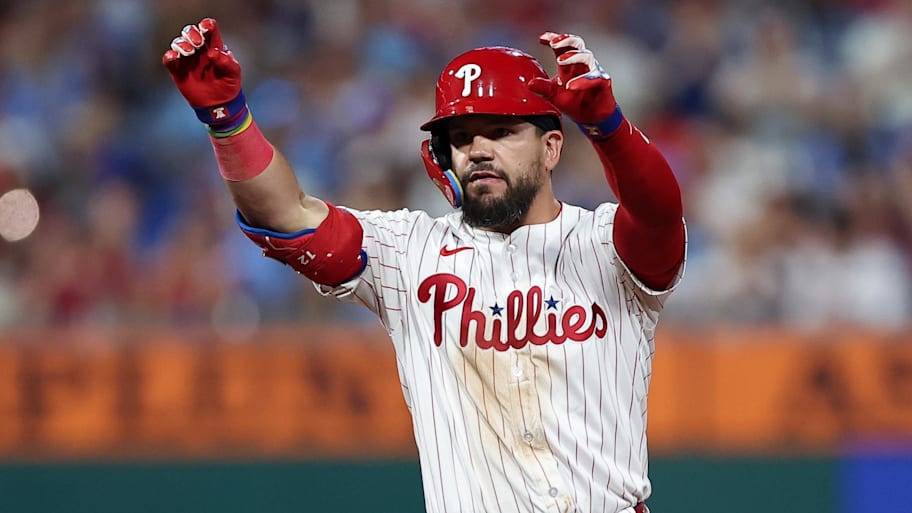Now that the trade deadline has come and gone, we are officially in baseball’s stretch run.
A flurry of activity made for a chaotic Thursday, with teams buying and selling and sometimes doing a little bit of both (or nothing at all). With July in the rearview mirror, the time felt right for another set of power rankings after our last check-in came around the season’s halfway point.
Beyond the scores of players changing teams, a lot’s changed since then: the Yankees, sans Aaron Judge, have gone into a tailspin; the Brewers are a juggernaut; the Blue Jays are in first place; and the Marlins are .500 (arguably the most impressive feat of the bunch). Our roundtable of writers will sort through all the rubble and rank teams based on their season performances to date. The group will also assign deadline grades for all 30 clubs, so it’s possible to receive a passing mark despite ranking near the bottom of the list (and vice versa).
1. Milwaukee Brewers (LR: 12)
Deadline grade: C
The Brewers weren’t aggressive at the trade deadline, but that may have been because they don’t feel the need to be. Milwaukee already boasts the league’s best record, with a loaded pitching staff that has the league’s fourth-best ERA (3.66) and a lineup that has the second-best batting average (.257). Shelby Miller will help shore up the bullpen as the team takes aim at a World Series run, though it would’ve been nice to see them add some power to the lineup. Still, this team was a true contender before the deadline and remains so afterwards. — Karl Rasmussen
2. Los Angeles Dodgers (LR: 1)
Deadline grade: C+
The Dodgers didn’t do a whole lot at the deadline because, other than injuries, they don’t have many holes. Adding veteran reliever Brock Stewart (2.31 ERA) was a smart upgrade, and the addition of Alex Call as a reserve outfielder beefs up the bench. They also added minor league pitchers Adam Serwinowski and Paul Gervase. It wasn’t a sexy deadline, and they didn’t find a replacement for the woeful Michael Conforto, but the roster was already pretty much set. — Ryan Phillips
3. Chicago Cubs (LR: 2)
Deadline grade: C+
The Cubs didn’t do much at the deadline, despite being heavily linked with MacKenzie Gore and Merrill Kelly. The team walked away with two new additions, acquiring Andrew Kittredge to enhance the bullpen and Mike Soroka to fortify the rotation. The Cubs’ lineup is already one of the best in MLB, and they did make moves to improve their pitching which will help as they aim to overtake the division-leading Brewers, but were their additions enough to support a World Series run? — KR
4. Philadelphia Phillies (LR: 8)
Deadline grade: A-
Giving up two top-five prospects for Jhoan Duran hurts, but this is a team with one of the league's oldest cores that's been undone by multiple bullpen implosions in each of the last two postseasons. Harrison Bader may be the best effort yet to solve a long-held issue in center field. — Will Laws
5. Detroit Tigers (LR: 3)
Deadline grade: C+
The clock is ticking for the Tigers, whose franchise player—pitcher Tarik Skubal—is a free agent after the 2026 season. Quantity was the order of the day for Detroit, which added six pitchers including starters Charlie Morton and Chris Paddack. This is a team that could’ve stood to take a big bullpen swing; instead, the Tigers’ glamor relief acquisition was Nationals pitcher Kyle Finnegan. The moves added up to signal that Detroit isn’t going for the jugular just yet. — Patrick Andres
6. New York Mets (LR: 6)

Deadline grade: B
The Mets and Phillies had very similar deadlines, making over their bullpens while also acquiring a new center fielder—Cedric Mullins, in New York's case—though I rate the players Philadelphia landed higher. I didn't love trading three quality prospects for sidearmer Tyler Rogers, but I did like New York's reliever trades as a whole considering the variety of styles used by Rogers, Ryan Helsley and Gregory Soto. — WL
7. Toronto Blue Jays (LR: 14)
Deadline grade: B+
Armed with a division lead, the Blue Jays didn’t make a huge splash but aggressively sought upgrades, particularly to its pitching staff. Toronto addressed its average bullpen by importing a bat-misser in Seranthony Dominguez and a ground ball connoisseur in Louis Varland. What could make or break this haul is the risky acquisition of 2020 Cy Young Award winner Shane Bieber, who has yet to pitch this season. But his potential ceiling is a playoff ace. — Tim Capurso
8. San Diego Padres (LR: 10)
Deadline grade: B
The Padres gave up far too much in a Mason Miller trade that is still a head-scratcher. But while he may have surrendered a lot of prospect capital, A.J. Preller fixed a lot of his issues in a blitz of deals on deadline day. The addition of Ramón Laureano fills a huge hole in left field, while Ryan O’Hearn will help at DH and on the bench, and Freddy Fermin should boost production at catcher. JP Sears and Nestor Cortes will help rotation depth as well. It was a solid deadline, though a pricey one. — RP
9. Boston Red Sox (LR: 15)
Deadline grade: C-
In a vacuum, the Red Sox had a solid trade deadline, importing pitching depth in the form of reliever Steven Matz and starter Dustin May. But after shipping away franchise star Rafael Devers while insisting the club was still going to compete, then taking a 10-game winning streak into the All-Star break, expectations shifted. Boston was expected to actively buy, but barely moved the needle. But hey, at least they tried right? — TC
10. Houston Astros (LR: 7)
Deadline grade: C+
The Carlos Correa reunion makes for a fun storyline, but it's far from a slam dunk to help Houston in the short- or long-term. The Jesús Sánchez addition was nice, but the Astros could have really used another starting pitcher or two to help fend off the hard-charging Mariners in the AL West race. Houston has plenty of firepower in the bullpen, so the playoff plan is likely to lean on that strength on days when Hunter Brown or Framber Valdez don't pitch. — Nick Selbe
11. Seattle Mariners (LR: 11)
Deadline grade: A
Now we're talking, Seattle. Last year, the Mariners' young, star-studded rotation was the envy of baseball. Their offense was anemic, though, and instead of committing serious resources toward bolstering the offense, the front office took more of a half measure, and the team fell a game short of the playoffs. Now, with the additions of Josh Naylor and Eugenio Suarez, Seattle's roster looks a lot more well-rounded and capable of making it to October. — NS
12. New York Yankees (LR: 4)
Deadline grade: A-
As Brian Cashman hinted, the Yankees went to town. New York upgraded its struggling bullpen with three high-leverage relievers in David Bednar, Camilo Doval and Jake Bird, addressed its gaping hole at third base by importing Ryan McMahon and even added depth with the acquisitions of José Caballero, Amed Rosario and Austin Slater. The Yankees regrettably didn’t add a starting pitcher, but improved their roster while surrendering just one top-10 prospect. Impressive. — TC
13. Texas Rangers (LR: 19)
Deadline grade: B
So much of trade deadline analysis is understandably centered on how effectively teams address their needs. Sometimes, though, it makes sense to double-down on strengths, and that's what Texas did in adding Merrill Kelly, Danny Coulombe and Phil Maton to a pitching staff that already had the league's best ERA. Though the group on hand was already performing well, Texas might feel better about Kelly starting a playoff game than Jack Leiter or Patrick Corbin. The Rangers could have done more to help its below-average offense, though. — NS
14. Cincinnati Reds (LR: 13)
Deadline grade: C-
The Reds made a pair of interesting acquisitions at the trade deadline, fixated on improving their defense and starting pitching. Ke’Bryan Hayes is an elite defender, but is an absolute zero at the plate, while Zack Littell, who has surrendered a league-leading 26 home runs this year, may have some difficulties at the hitter-friendly Great American Ball Park. Cincinnati is very much alive in the hunt for the postseason, but their lackluster trade deadline won’t do much to propel them into true contention. The Reds are good, but they fall short of being great, or even close to it. — KR
15. Tampa Bay Rays (LR: 9)
Deadline grade: B
The Rays’ poor play in July forced the front office into the awkward position of straddling between buying and selling. In selling, they dealt from a position of depth (catcher), trading away Danny Jansen while offloading rental arm Zack Littell. In buying, they acquired strikeout artist and reliever Griffin Jax, as well as starting pitcher Adrian Houser. Tampa Bay’s front office played this about as well as they could. — TC
16. Kansas City Royals (LR: 22)
Deadline grade: B
Sitting one game under .500 on deadline day, the Royals declined to commit strongly to buying or selling—not the worst course of action for a youthful team that’s lost a pair of frontline starters for the season. Ultra-consistent right fielder Mike Yastrzemski is an intriguing piece, as is pitcher Ryan Bergert (now one of the team’s top 10 prospects). More eventful summers are certain to come for Kansas City, so there was no need to burn down the house during this one. — PA
17. Miami Marlins (LR: 28)

Deadline grade: B
The Marlins didn't do much, merely trading outfielder Jesús Sánchez and backup catcher Nick Fortes, but they're the rare team that’s likely out of the playoff race that probably shouldn't have done too much selling. It was going to be tough to get proper value for struggling ace Sandy Alcantara, and with Miami on an upward trajectory, Edward Cabrera could be part of the next winning Miami team. — WL
18. Cleveland Guardians (LR: 20)
Deadline grade: B-
This grade comes with an asterisk, as the Guardians’ most obvious trade chip—pitcher Emmanuel Clase—was suspended Monday amid a gambling inquiry. With this backdrop, Cleveland fared decently with the hand it was dealt. The Guardians held on to left fielder Steven Kwan and flipped pitcher Shane Bieber for a solid prospect in pitcher Khal Stephen. Cleveland could’ve rid itself of more expiring contracts, but returns for, say, first baseman Carlos Santana and center fielder Lane Thomas likely would’ve been limited. — PA
19. San Francisco Giants (LR: 6)
Deadline grade: B
The Giants decided to sell after tanking since the addition of Rafael Devers on June 15. While they didn’t get an A-level prospect, they got a lot of them. Moving relievers Tyler Rogers and Camilo Doval landed them seven young players, none of whom now rank in the team’s top 10 prospects. Moving Mike Yastrzemski added another unheralded return. While the haul wasn’t exciting, credit to Buster Posey for accepting reality, selling, and landing a lot of pieces. — RP
20. St. Louis Cardinals (LR: 17)
Deadline grade: C+
The Cardinals made the decision to fold their cards and sell at this year’s trade deadline, and it’s hard to fault them for it. This isn’t a team that was World Series bound, and offloading Steven Matz, Erick Fedde and Ryan Helsley all but solidifies that. It wasn’t a bad move for St. Louis to sell, as they were at least able to get something back for players on expiring contracts. — KR
21. Los Angeles Angels (LR: 23)
Deadline grade: F
Say what you want about the Twins' complete and utter tear-down, at least it's an ethos. Faced with the choice of adding impact players for the stretch run or, more prudently, taking aim at being more competitive in 2026, the Angels did nothing. If adding well-traveled veteran relief pitchers Andrew Chafin and Luis García—plus utility infielder Oswald Peraza—counts as buying, then I'm not interested in what the Angels are selling. — NS
22. Arizona Diamondbacks (LR: 21)
Deadline grade: A-
No team sold harder at the deadline than the Diamondbacks, and they did well to add a ton of prospects to their system. They landed five prospects from the Mariners in separate trades for Josh Naylor and Eugenio Suarez, but didn’t get any of the team’s top youngsters in return. They moved Merrill Kelly to Texas for three young arms, sent Randal Grichuk to the Royals for a relief prospect, and dealt Shelby Miller and Jordan Montgomery in a pure salary dump. It was a smart deadline for Arizona. — RP
23. Minnesota Twins (LR: 18)

Deadline grade: D
Just two years after a division title, Twins fans were left reeling after one of the most thorough slash-and-burn trade deadlines in the history of the sport. Minnesota moved out 38% of its big league roster while bafflingly keeping its leader in bWAR—pitcher Joe Ryan, who likely would’ve fetched a haul with two more arbitration years. Keeping Ryan may prevent the Twins from a complete nosedive, but the act’s mixed message serves to underline the franchise’s complete rudderlessness as a sale looms. — PA
24. Baltimore Orioles (LR: 24)
Deadline grade: B
The Orioles’ front office likely never imagined they’d be forced to sell at the deadline. But to its credit, Baltimore’s decision-makers went all in, dealing pending free agents Cedric Mullins, Gregory Soto and Ryan O’Hearn, and even sprinkling in club-controlled veterans like Ramón Laureano. Baltimore netted an impressive 15 prospects, notably improving its crop of young pitchers almost overnight. The only downside? Not one top-100 prospect was acquired. — TC
25. Atlanta Braves (LR: 16)
Deadline grade: F
Atlanta is clearly in need of a shakeup yet couldn't even extract anything of value for possible rentals Marcell Ozuna and Raisel Iglesias—the latter is particularly galling considering the bustling market for relievers. With rookie Drake Baldwin thriving, a trade of catcher Sean Murphy could have boosted a bereft farm system. — WL
26. Pittsburgh Pirates (LR: 25)
Deadline grade: B
Selling was an obvious choice for the Pirates at the deadline, who parted with many aging veterans in order to enhance their rebuild. Pittsburgh continues to get younger and strengthen the farm system, but remain one of MLB’s worst teams in 2025, and things could get worse following the exodus of experienced players. Paul Skenes gives them a fighting chance every time he starts, but the fact that he has just six wins while pitching to a 2.02 ERA in 23 starts says all you need to know about the lowly Pirates. — KR
27. Athletics (LR: 27)
Deadline grade: B+
It's hard to be too laudatory of an ownership group that's guided the A's to the purgatory they find themselves. But as far as effectively executing a sellers' playbook, the A's did quite well. They took advantage of the high demand for elite-level closers—a market that got more seller-friendly after Emmanuel Clase was placed on leave amid a gambling investigation—and got a great haul for Mason Miller. Few fans will be high-fiving anything during the franchise's listless period, but this appears to be a trade deadline well spent. — NS
28. Washington Nationals (LR: 26)
Deadline grade: B
The Nationals dealt five rentals and sold high on a 30-year-old outfielder in Alex Call who was somewhat blocked in a young, crowded outfield. Pretty textbook work from interim GM Mike DeBartolo, who deserves credit but not too much credit, unless one of the seemingly uninspiring prospects he acquired pans out. Check back in later on that. — WL
29. Chicago White Sox (LR: 29)
Deadline grade: B-
The White Sox surprised some by keeping center fielder Luis Robert Jr., who holds two $20 million club options after 2025 and is pacing for the lowest bWAR of his career. He’s still just 28 and isn’t far removed from a great ‘23 campaign, so he may figure into the team’s future plans. Chicago did well to sell high on pitcher Adrian Houser, a May find with a 2.10 ERA in 11 starts who joined the Rays. — PA
30. Colorado Rockies (LR: 30)
Deadline grade: B
The Rockies did something positive at the deadline! The perpetually quiet franchise was in full-sell mode and made moves. They shipped Ryan McMahon and Jake Bird to the Yankees in separate deals, then sent reliever Tyler Kinley to the Braves for fellow reliever Austin Smith. They landed Roc Riggio and three pitchers, including new No. 5 prospect Griffin Herring, in the Yankees deals. They didn’t get an elite prospect, but at least they did something this year. — RP
More MLB on Sports Illustrated
This article was originally published on www.si.com as MLB Power Rankings: Handing Out Trade Deadline Grades for All 30 Teams.
